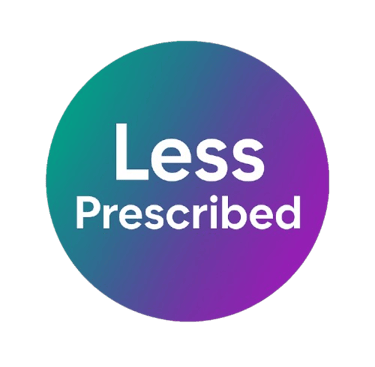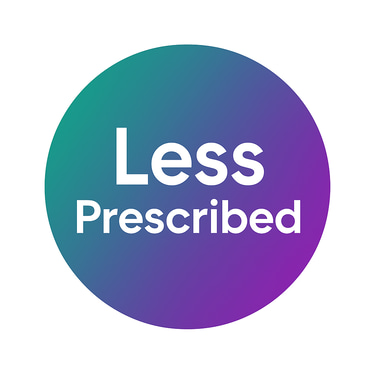Prescription Fear by the Numbers: The Real Impact of Opioid Policy on Chronic Pain Patients
For years, the United States has been in a delicate balancing act — fighting the opioid crisis while trying to ensure that patients in genuine pain still have access to relief. Yet as policies tightened, a new public health issue quietly emerged: untreated chronic pain and the medical fear of prescribing. At LessPrescribed, we’ve reviewed government data, patient surveys, and medical research to better understand what this shift really looks like — and who’s being left behind.
LessPrescribed Research & Editorial Team
11/9/20252 min read


A Decade of Decline in Prescriptions
According to the U.S. Centers for Disease Control and Prevention (CDC), opioid prescriptions have dropped by over 44% between 2012 and 2022.
In 2012, American doctors wrote 81.3 prescriptions per 100 people.
By 2022, that number had fallen to 45.2 per 100 people — the lowest rate in nearly two decades.
While this decline reflects success in controlling misuse, it has also triggered unintended consequences for millions living with chronic pain.
A 2023 Kaiser Family Foundation (KFF) survey found that:
🔹 1 in 5 adults with chronic pain say their doctor reduced or stopped their medication in the past two years.
🔹 67% of them said it made their pain worse.
🔹 Nearly half said they were not offered any alternative treatments.
Doctors Under Pressure
Physicians today face a complex environment.
While medical boards urge caution, enforcement agencies still investigate “red flag” prescribers — sometimes without context.
A 2021 study in the Journal of Pain Research found that:
83% of pain specialists reported feeling “moderate to severe anxiety” about regulatory scrutiny.
29% said they had reduced opioid prescriptions out of fear of investigation, not based on patient need.
As one doctor told researchers:
“I didn’t stop prescribing because I stopped believing my patients — I stopped because I started fearing my regulators.”
This “chilling effect” has created a gap between medical judgment and policy compliance, where even compassionate doctors feel cornered.
The Patient Experience
For patients, the numbers tell a painful story.
According to a National Institutes of Health (NIH) analysis:
Over 50 million Americans live with chronic pain.
Roughly 17 million experience “high-impact chronic pain,” meaning it limits daily activity and work.
Yet, despite these figures, access to pain specialists has declined, especially in rural areas.
A Johns Hopkins University study published in 2020 found that nearly 40% of pain clinics had closed or reduced services since 2016 — primarily due to new prescribing limits and insurance barriers.
Patients who were once stable now report:
Loss of mobility
Inability to work
Increased depression or anxiety
And, in tragic cases, suicidal thoughts linked to unmanaged pain
Unintended Consequences: What the Data Shows
While opioid prescriptions dropped dramatically, overdose deaths continued to climb — but from different drugs.
In 2022, over 75% of overdose deaths involved synthetic opioids like fentanyl, according to the CDC — not doctor-prescribed medication.
This means policy restrictions on legitimate medical care haven’t solved the crisis — they’ve shifted it.
Public health experts now argue that reducing access for chronic pain patients doesn’t meaningfully affect illicit use — but it does drive suffering in a vulnerable population.
What Experts Recommend
Leading researchers and organizations — including the American Medical Association (AMA) — have called for a more balanced approach:
Individualized care instead of one-size-fits-all prescribing rules
Clearer guidance to prevent abrupt tapering or patient abandonment
Education for both patients and physicians on pain management and addiction risks
Policy reform that protects doctors acting in good faith
In 2022, the CDC updated its guidelines to explicitly warn against forced tapers and rigid dose limits, urging “clinical judgment and compassion” instead.
Yet, in practice, many systems still lag behind the new evidence.
The Path Forward
The data is clear:
Reducing misuse is essential — but so is preserving humanity in medicine.
Fear-based prescribing harms both patients and doctors, while doing little to stop the spread of illegal fentanyl or addiction.
True progress will come from policies that are balanced, data-driven, and empathetic — not punitive.
At LessPrescribed, we believe no one should suffer silently because the system is afraid to help.
That’s why we continue to share research, real stories, and solutions — bringing both compassion and facts to the conversation.
This website sheds light on their experiences, the ethical dilemmas faced by healthcare providers, and the policies driving these decisions.
Our goal is to foster understanding, balance safety with compassion, and give a voice to those affected by
the unintended consequences of reduced opioid prescribing.
USA
quick links
hello@lessprescribed.com
+1-555-123-4567
© Copyright 2025 Less Prescribed. All rights reserved. Privacy Policy


